Did you know that the loud sound produced by a train is an essential safety mechanism that dates back to the early days of railroads? Originally, train engineers communicated with each other using hand signals and bells, but as train speeds increased and tracks became busier, a more audible warning was needed to prevent accidents. Today, the use of a distinct sound to alert pedestrians, motorists, and other trains of an approaching train has become a standard practice in the industry.
The history of train horns can be traced back to the 1830s when the first locomotive horn was invented. Since then, the sound has evolved from a simple whistle to a multi-tone horn to ensure maximum effectiveness. This audible warning system is crucial in preventing collisions and ensuring the safety of everyone near railroad tracks. In the United States alone, train horns are sounded over 2 million times a year to avoid accidents at railroad crossings.
One solution to noise complaints related to train horns is the implementation of Quiet Zones in certain areas. These designated zones have additional safety measures in place that allow trains to pass through without sounding their horns, minimizing noise disruptions to nearby residents. While Quiet Zones provide relief to those living in close proximity to railroads, they highlight the importance of train horns in ensuring safety in other areas where the audible warning is necessary.
What are the meanings of locomotive horn signals?
Locomotive horn signals are a crucial form of communication between train operators and other individuals in the vicinity of the tracks. These signals are used to alert pedestrians, drivers, and railway workers about the presence of an approaching train and to convey important messages regarding the train's direction, speed, and potential hazards. Understanding the various horn signals and their meanings is essential for ensuring safety and preventing accidents on railroad tracks. In the following sections, we will explore the different types of locomotive horn signals and how they are utilized in different situations to maintain safe railway operations.
The sound of a train horn is one that is instantly recognizable to many people. These loud blasts of sound serve an important purpose in railroading, communicating vital information to others on or near the tracks. Here's a breakdown of the different horn signals used by locomotives:
Approaching a Crossing
When a train approaches a crossing, the horn is sounded in a pattern of two long blasts, one short blast, and another long blast. This signal warns motorists and pedestrians that a train is approaching and to look out for oncoming trains.
Emergency Stop Signal
If the engineer needs to make an emergency stop, they will sound the horn in a series of short, rapid blasts. This signal alerts those on or near the tracks that the train is coming to a sudden halt.
Warning of Shifting Movements
When a train is making shifting movements in a rail yard or other designated area, the horn will sound in a series of short, sharp blasts. This signal alerts railroad workers and others to stay clear of moving cars and equipment.
Approaching Pedestrians or Workers
When a train is approaching a worksite or a group of pedestrians near the tracks, the horn will sound in a long, continuous blast. This signal warns those nearby to stay clear of the tracks until the train has passed.
Crossing an Intersection
As a train moves through an intersection, the horn will sound in a series of short, quick blasts. This signal is a warning to drivers and pedestrians to yield to the oncoming train and to avoid crossing the tracks until the train has passed.
Statistics:
- In 2020, there were approximately 2,029 collisions between trains and vehicles at railroad crossings in the United States.
- On average, a train collides with a vehicle or person every three hours in the U.S.
- According to Operation Lifesaver, a non-profit organization dedicated to promoting railroad safety, 94% of all railway-related fatalities are due to collisions at crossings or trespassing on tracks.
https://youtube.com/watch?v=2kDORB3vR8s
1. What are the sounds that locomotives make to signal their presence?
Locomotives use different types of sounds to communicate with others. The sounds serve as signals to ensure safety and awareness.
- The most common noise a locomotive makes is a long, sustained blast or two toots, followed by a short one.
- These sounds are vital to alert those around the railroad tracks of the approaching train.
- The horn signals help prevent accidents and ensure the efficient movement of trains.
2. How should drivers or pedestrians respond to locomotive horn signals?
When approaching a railroad crossing or track, it is essential to understand how to respond to the sounds produced by locomotives.
- Stop, look, and listen when you hear the train horn signals.
- Make sure to never attempt to outrun a train or cross the tracks when the gates are down.
- It is crucial to remain patient and wait for the train to pass before proceeding.
3. Why do locomotives use horn signals instead of other forms of communication?
Horn signals are the preferred method of communication for locomotives for several reasons.
- The loudness of the horn signals ensures that both drivers and pedestrians can hear them from a distance.
- The distinct patterns of the horn signals convey specific messages to those near the tracks.
- Horn signals have been proven to be effective in alerting individuals to the presence of trains and preventing accidents.
4. Are there specific regulations regarding the use of locomotive horn signals?
Regulations are in place to govern the use of locomotive horn signals to maintain safety and order.
- In the United States, the Federal Railroad Administration (FRA) regulates the use of train horns.
- Locomotive engineers are required to sound the horn a certain distance before reaching a railroad crossing.
- Failure to comply with these regulations can result in fines and penalties for the railroad company.
5. How can communities work together to reduce the impact of locomotive horn signals on residents?
It is essential for communities and railroad companies to collaborate to find solutions that minimize the disturbance caused by train horn signals.
- Establishing quiet zones where train horns are not sounded can help reduce noise pollution for nearby residents.
- Installing wayside horns at railroad crossings can also be a more localized solution to limit horn noise.
- Effective communication between communities and railroad companies is key to addressing concerns and finding mutually beneficial strategies.
Conclusion
In conclusion, locomotive horn signals play a crucial role in ensuring the safety of both railroad workers and the general public. The standardized signals help communicate important messages to pedestrians, motorists, and other trains, reducing the risk of accidents and enhancing overall operational efficiency. By understanding and following these signals, individuals can contribute to a safer and more efficient railway transportation system.
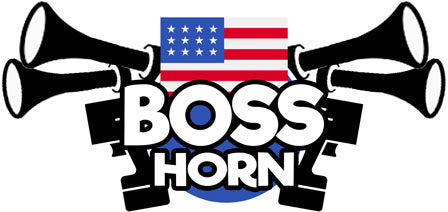
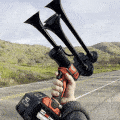
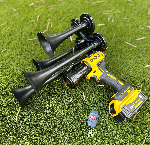
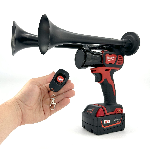
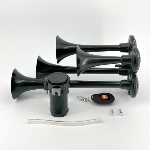





 https://bosshorn.com
https://bosshorn.com







